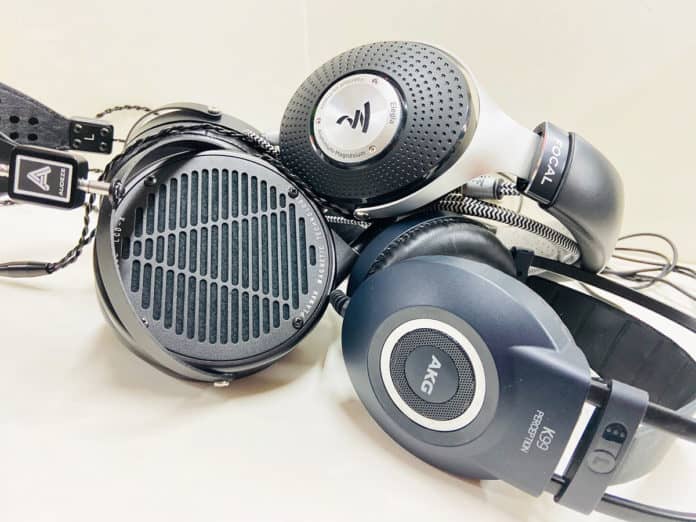If you’re new to the headphone game, you may be wondering why audiophiles own multiple pairs of cans. The first answer is that we’re very sick people. But it’s also more complicated than a mere pathological condition. So, let’s take a close look at the psychology behind Audiophiliacs: Why Do They Have So Many Headphones?
Audiophiliacs: Why Do They Have So Many Headphones?
Different Sound for Different Needs
Musical genre, application and state of mind are all factors that an audiophile considers when purchasing a headphone. So, let’s talk balance, sound signature and headphone design.
Flat Balance
A headphone’s balance will obviously have an effect on how you hear a song. For example, you may start out with a headphone that has a relatively even balance. And a headphone with an even balance can reasonably handle all genres. Because the low, mid and high frequencies are all given equal attention, nothing is lost in the mix. The brand, AKG, is well known for making headphones that have a flat balance. And for this reason, many musicians and mixers will use their cans; it’s an honest representation of the mix because none of the frequencies are artificially accentuated or recessed. It’s also a good choice for fans of classical music; the low-end doesn’t weigh down the strings, and it keeps the timbre sounding natural and realistic. But bass still exists in classical music, so you don’t want it missing altogether.
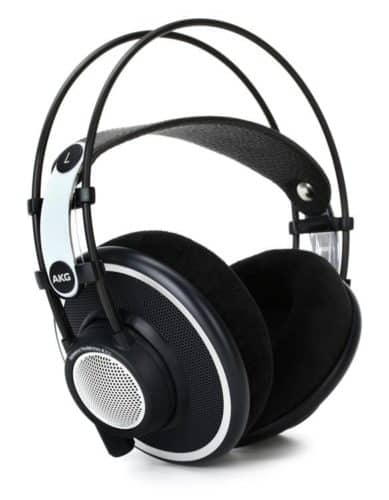
The only problem with very evenly balanced headphones is that, for some, this kind of profile can get boring. Where’s the bass oomph? Where’s the sparkle in the highs? Maybe you need something more dynamic?
Dynamic Balance
Those who want something a little more energetic, may opt for a more “V-shaped” or “U-shaped” sound signature. This means that the lower and higher frequencies are emphasized, while the mids are more recessed. V-shaped sound signatures are the extreme example, while the mids on a U-shaped signature are a little less recessed. This kind of sound signature works well for pop, for example. You get a punchy bass, and vocals (in U-shapes) often shine through the mix. In a very V-shaped profile, you may hear less prominent vocals (especially male vocals), as they tend to mostly exist in the midrange. Percussion will also sound extra crisp and snappy. And in general, the dramatic contrast between the lows and high makes for a very vibrant feel. Some rock fans prefer V or U-shaped sound signatures for this reason as well. The Fostex TH900 is a popular example of a V-ish sound signature.
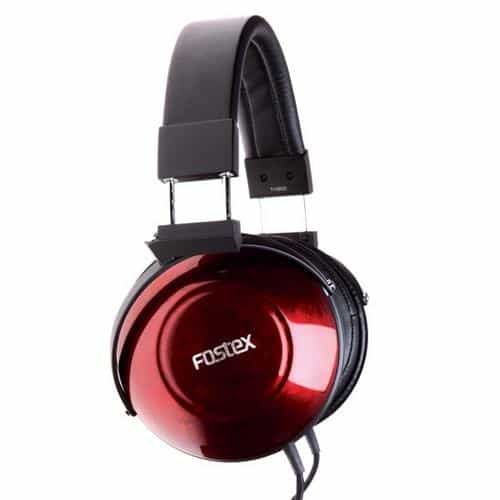
The only problem with V-shaped sound signatures is that the mix can feel a hollow in the middle. And those who like a very full-bodied and expansive sound may feel that something is missing. And this is why U-shapes are so popular. You’ll get that vibrant feel without sacrificing too much body in the middle. An example of a moderately U-Shaped sound signature would be the Beyerdynamic DT 1770. You’ll get some solid presence in the lows and some snap in the highs without losing body in the middle.
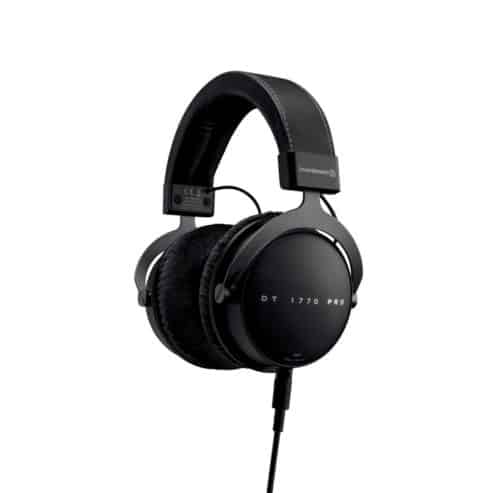
Light and Bright
Sometimes audiophiles like their balance on the lighter side, especially if they’re listening to a lot of jazz or classical music. And a lighter, brighter headphone that’s particularly transparent does a good job at highlighting the nuances of strings and brass in the higher frequencies, while avoiding putting too much weight on the instruments in the low frequencies. As mentioned above, the lack of low-end emphasis keeps the timbre sounding realistic and unadulterated, while helping the detail shine through in the mids. The brand, Grado is a good example of such a sound signature. The only problem with headphones that lean bright is that many of them often have a low end that too vegan for some genres. Starting to see why audiophiles need so many headphones?
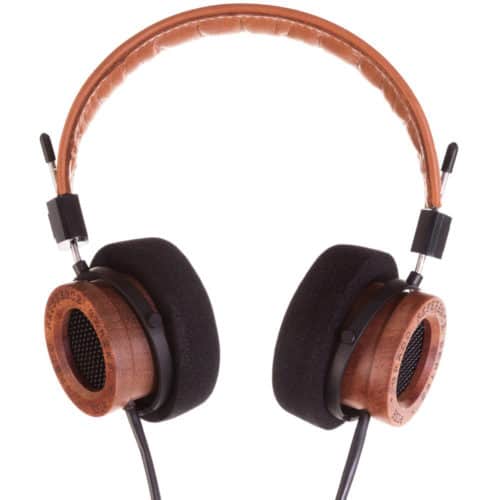
Warm, Full-Bodied and Rich
Headphones with weighty bass frequencies and lows mids lend warmth to the mix. And these kind of sound signatures sometimes have more moderate high frequencies, though not always (See “Dynamic”).
Speaking of low-mids, this frequency range is partly what lends body to a track. So, full-bodied signatures will often feel warm as well. However, you can have a full-bodied sound without a ton of warmth; ample low mids with more humble bass frequencies, for example. And in the same way, you can get warmth in the lows without much body in the midrange.
Many audiophiles also talk about the richness of a sound signature. The weight of the lower frequencies tends to lend “richness” to a mix. At the same time, there are many rich sounding headphones that don’t have an extremely heavy low end. A good example is the brand, Focal. They produce planar magnetic headphones that don’t have extremely heavy low-ends. But still, instruments convey ample substance, giving it a very luxurious feel. And a lot of audiophiles gravitate towards planar magnetic headphones because of the rich sound they tend to produce.
That being said, a great example of planar magnetic headphones that incorporate all three of these characteristics – warmth, body and richness – would be Audeze’s line-up.
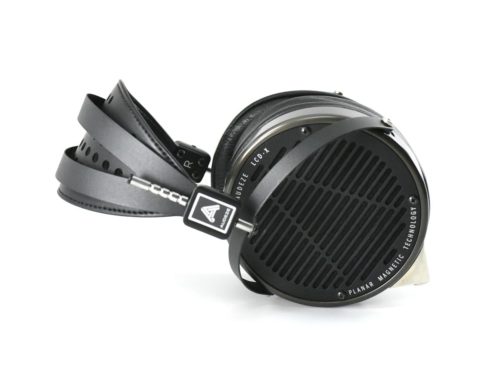
Open-Back vs Closed-Back
Finally, there’s the choice between open-back and closed-back headphones. Often, open-back headphones give you more spacious and multidimensional soundstage than closed back headphones. The only problem is that they bleed sound and let sound in. Needless to say, open-back headphones don’t fare well in the streets of Manhattan. And if you’re recording vocals or listening to music next to your sleeping partner, you may have to compromise soundstage for the privacy and sound isolation of a closed-back. What does this mean for the audiophile? We must own both, an open-back and a closed-back headphone.
SUMMARY
For the monogamous audiophile, one pair of fantastic headphones can be enough, especially if it has a versatile sound signature. But those who crave variety and like to fool around, the options are endless. You may want to spend a night with a V-shape and listen to pop. At the same time, you want to wake up in the morning next to a more neutral, even-keeled headphone and listen to Vivaldi. If you’re in the mood for a steak, you may want a rich and full-bodied rock track. If you’re on a diet…You get the idea. Finally, buying a great headphone is like getting your first tattoo. You’ll always get another one, and at the end of the day, it’s an addiction like anything else.
MAJORHIFI may receive commissions from retail offers.


